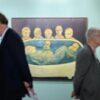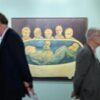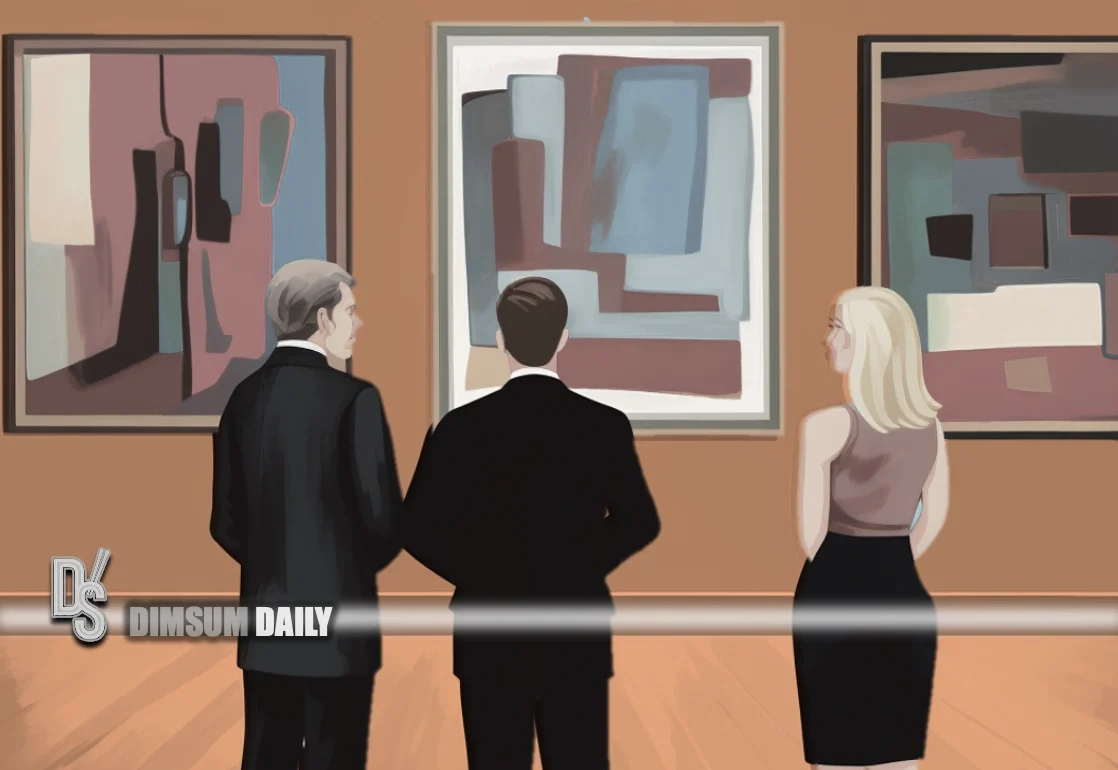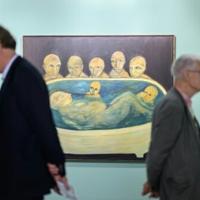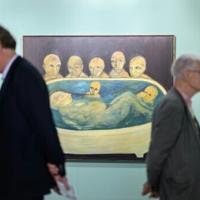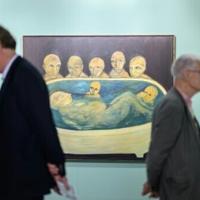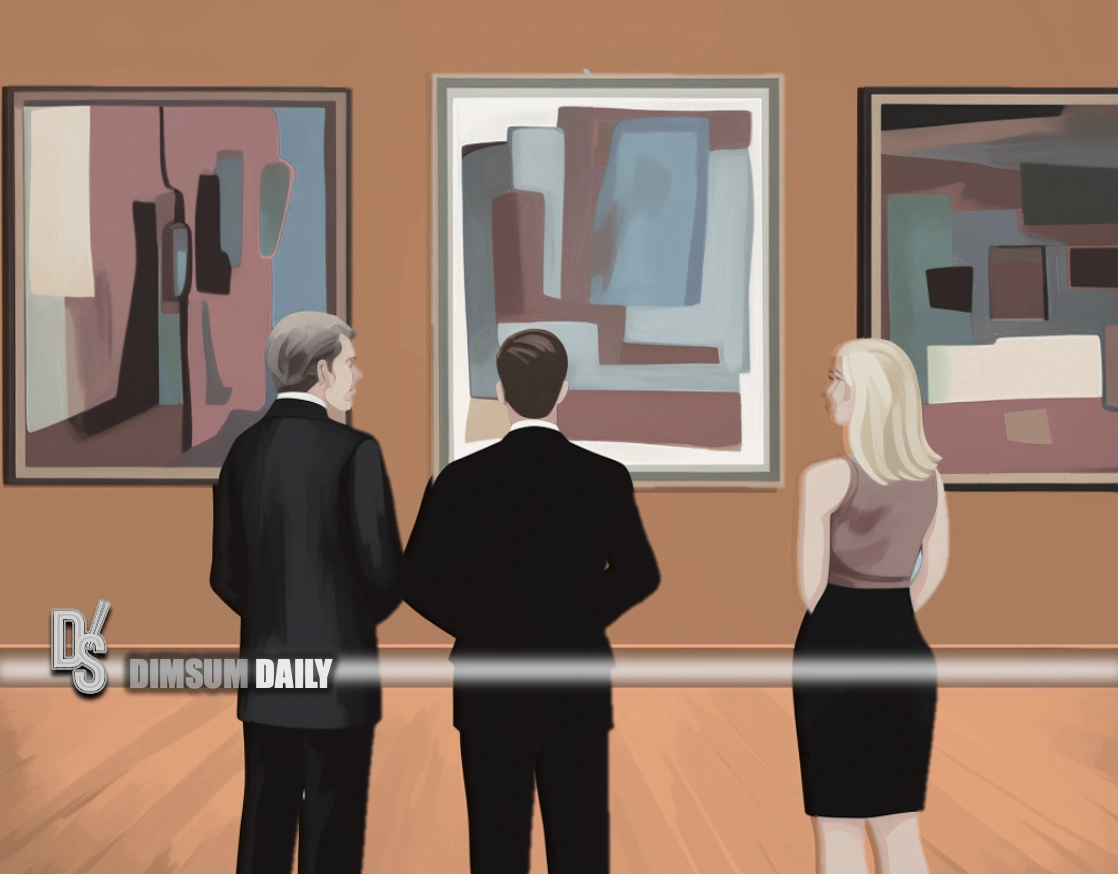
20th January 2025 – (New York) The emperor’s new clothes are starting to look rather threadbare in the art world’s gilded corridors. As Sotheby’s attempts to dress up its haemorrhaging of 100+ employees as “strategic restructuring” and Christie’s tries to spin its 16% sales nosedive as “market adjustment,” the elephant in the room grows ever larger: the art market’s decade-long party is suffering one hell of a hangover.
2024 was brutal, and 2025 looks set to be even more merciless. The ultra-contemporary bubble hasn’t just deflated – it’s burst spectacularly, leaving a trail of unsold “emerging artists” whose meteoric rises are matching their falls. Those NFT evangelists? Suspiciously quiet now. Funny how that works.
Sure, Christie’s managed to flog Magritte’s “Empire of Lights” for $121.2 million, but one swallow doesn’t make a summer. The middle market is in freefall, with works in the $100,000 to $1 million range gathering dust faster than a forgotten Damien Hirst. Speaking of Hirst, there’s a metaphor in there somewhere about dots and bubbles.
The geographic power play is particularly rich. Abu Dhabi swaggers in with $700 million for Sotheby’s, while Hong Kong’s market maintains its facade of vitality through gritted teeth and government support. Meanwhile, Western auction houses perform elaborate courtship dances with Gulf money, principles be damned. It’s amazing how quickly ethical concerns evaporate when the checkbook is large enough.
Private sales are booming, they say. Translation: wealthy collectors are too embarrassed to test their prized possessions’ values in public. The whispered deals in freeport lounges and Swiss bank offices tell the real story of a market desperately trying to avoid price discovery.
Young collectors, those mythical millennials who were supposed to save the market? They’re finally showing signs of growing up, realizing that perhaps buying artistic derivatives of cartoon apes wasn’t the smartest long-term investment strategy. They’re pivoting to blue-chip artists faster than a day trader exiting a meme stock.
Sotheby’s move to the Breuer building reads like a desperate grasp at cultural legitimacy – nothing says “we’re totally fine” like dropping $100 million on real estate during a market downturn. It’s the corporate equivalent of buying a sports car during a midlife crisis.
The Old Masters’ “revival” is particularly amusing. Suddenly, everyone’s an expert on Rembrandt after a decade of throwing millions at artists barely out of art school. This flight to quality isn’t wisdom – it’s fear dressed up as connoisseurship. The same collectors who couldn’t distinguish a Bronzino from a Botticelli are now supposedly passionate about Renaissance art. Right.
Let’s talk about the elephant graveyard of mid-tier galleries. They’re dropping faster than NFT values, caught between mega-galleries hoarding blue-chip artists and Instagram-savvy upstarts selling directly to collectors. The “innovative partnership models” emerging? That’s just code for “we can’t afford the rent anymore.”
The tech wealth entering the market brings its own special flavour of absurdity. Silicon Valley billionaires approach art collecting like algorithm optimization, complete with spreadsheets analyzing “artistic value propositions.” Nothing says “I understand art” quite like a PowerPoint presentation on why Picasso’s Blue Period outperforms his Rose Period on ROI.
Environmental concerns in the art market are particularly rich. Yes, let’s all fret about carbon footprints while flying private jets to Art Basel’s three locations. The “sustainable practices” being adopted amount to little more than changing to LED lighting in galleries while shipping marble sculptures across continents in custom-built crates.
The financial instruments proliferating around art would make a Wall Street banker blush. Art-secured lending is just another way of saying “we’ve run out of things to collateralize.” The investment funds? They’re what happens when bankers get bored with regular asset classes and decide to financialize creativity itself.
Looking toward year-end, the market isn’t “evolving” – it’s having an identity crisis. The fundamental question isn’t about maintaining vitality; it’s about whether the whole system has become so bloated and self-referential that it’s lost touch with art’s actual purpose.
For those keeping score at home: major auction houses are firing staff, mid-tier galleries are closing, speculative contemporary art is tanking, and everyone’s pretending they’ve always loved classical art. Meanwhile, actual artists – you know, the people who make the stuff – are still struggling to make rent while their work gets flipped for profits they’ll never see.
2025 isn’t about recalibration – it’s about reckoning. The art market’s fundamental problem isn’t cyclical; it’s existential. We’ve created a system where art’s cultural value is completely divorced from its market value, where speculation has replaced appreciation, and where the biggest players are more concerned with maintaining the illusion of market stability than fostering actual artistic innovation.
As winter settles over the art world’s power centres, perhaps it’s time to admit that the emperor really is naked, and all the luxury real estate and sovereign wealth fund investments in the world can’t hide that fact. The question isn’t whether the market will survive – it’s whether it deserves to in its current form.
But hey, at least we’ll always have that $121.2 million Magritte to remind us of better days. Though someone might want to check if that empire of lights is starting to flicker.
This post was originally published on this site be sure to check out more of their content

